Change the backlight monitor (themselves)
Good day!
In this post, I would like to consider such a sore LCD monitors as broken backlights, try to figure out why this happens, well, and accordingly change them. Interested please follow the green man.
PS
Under the cut contains 27 photos
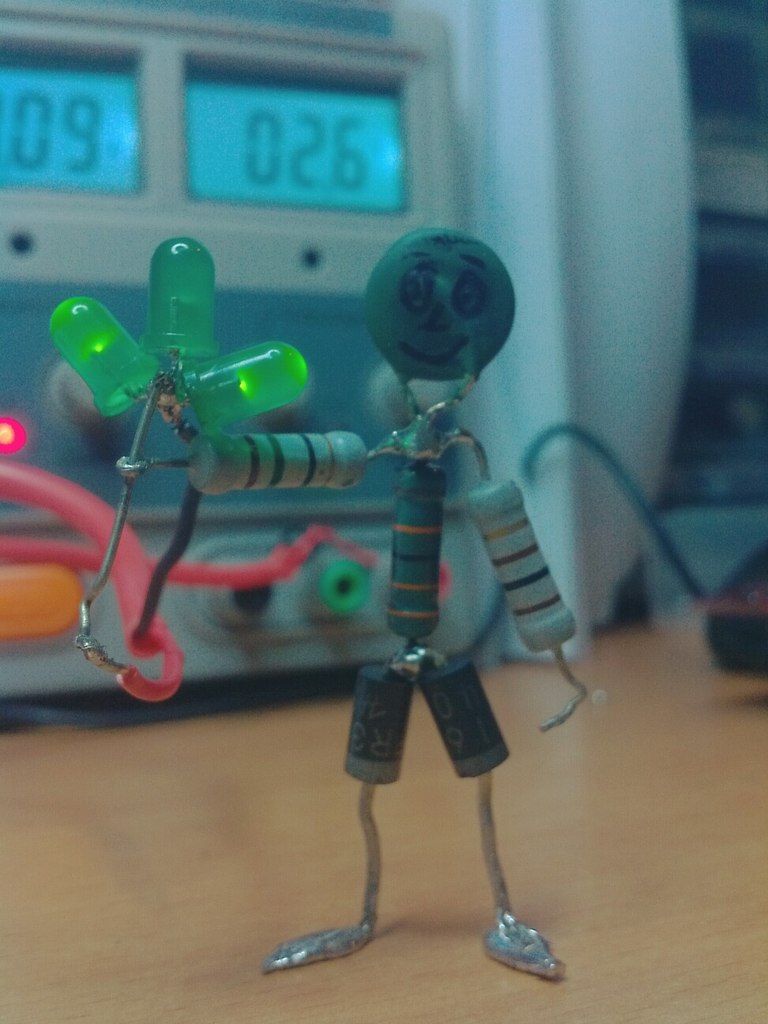
')
- Dear, I apologize in advance for the quality of the subsequent photos, photographed on the toaster ....
- Also, I want to note that the monitors do not differ much in principle, so do not be alarmed if you suddenly find al cogs in the place shown in the photo, they are somewhere nearby ...
So, we have a monitor that works in almost romantic, red and pink colors. The operating time of such a monitor is unpredictable ... but as a rule it does not exceed 2-3 hours, after which your eyes are given time to take a break, and the brain to think about the issues of being.

The problem is a failed monitor illumination lamp, but why did it happen?
There are many reasons for this situation:
- manufacturing defect,
- the closure of the metal parts of the lamp on the metal frame of the matrix,
- physical damage, etc.
But let's still a little insight into the theory.
But why does he then continue to work? and such a short time?
It's simple.
It is worth noting that monitors most often use 2 blocks of 2 lamps each ( on the top and bottom of the monitor ), which should evenly distribute light along the fiber under the matrix.
At failure of one or several lamps, the others continue to work. But the inverter ( which feeds them ) is a smart thing, and if he "sees" that something is wrong with one or several of his charges, he decides to stop his work so as not to harm.
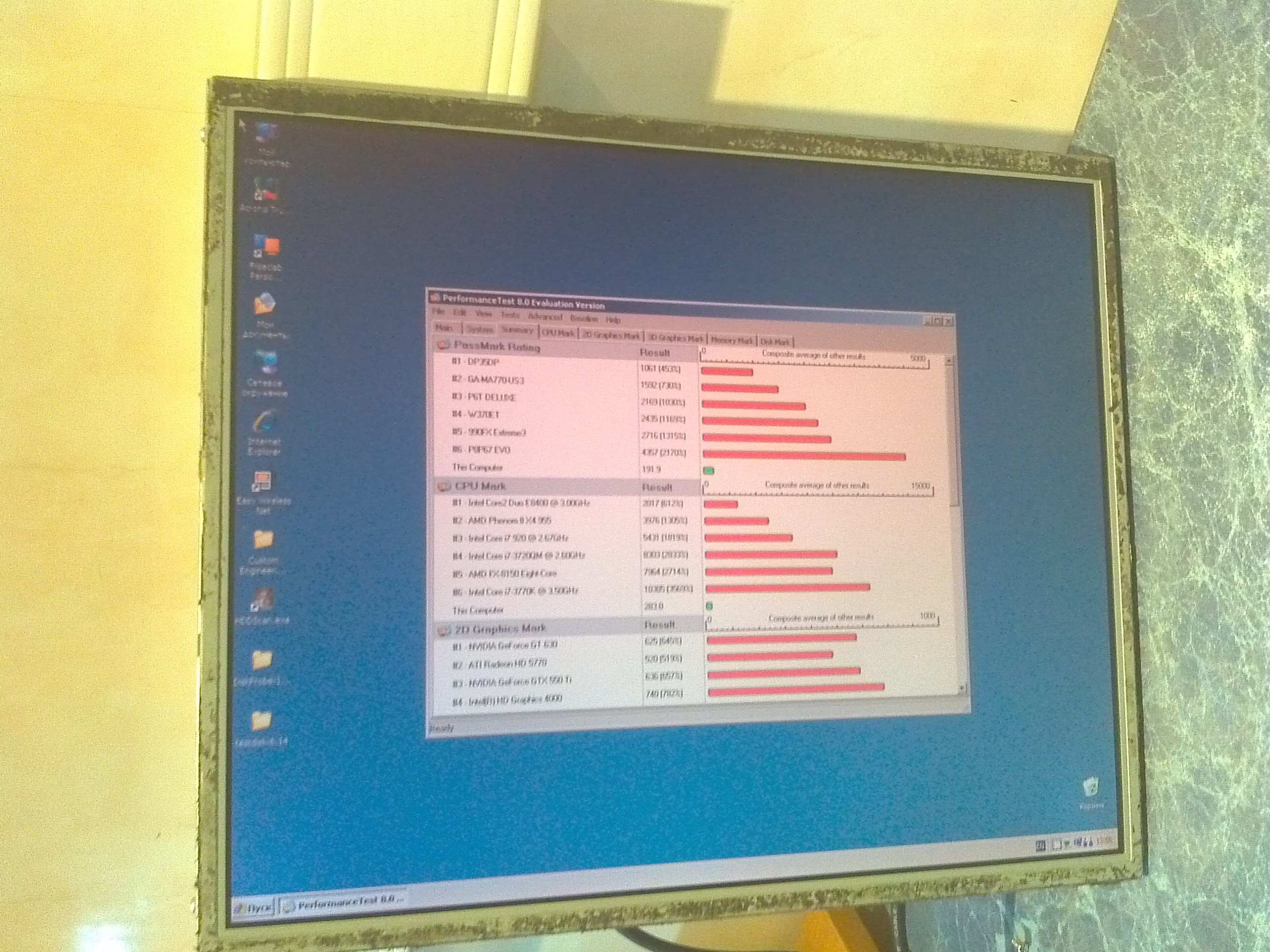
Well, let's break to disassembly?
We start by disconnecting all cables from the inverter unit and monitor controller,
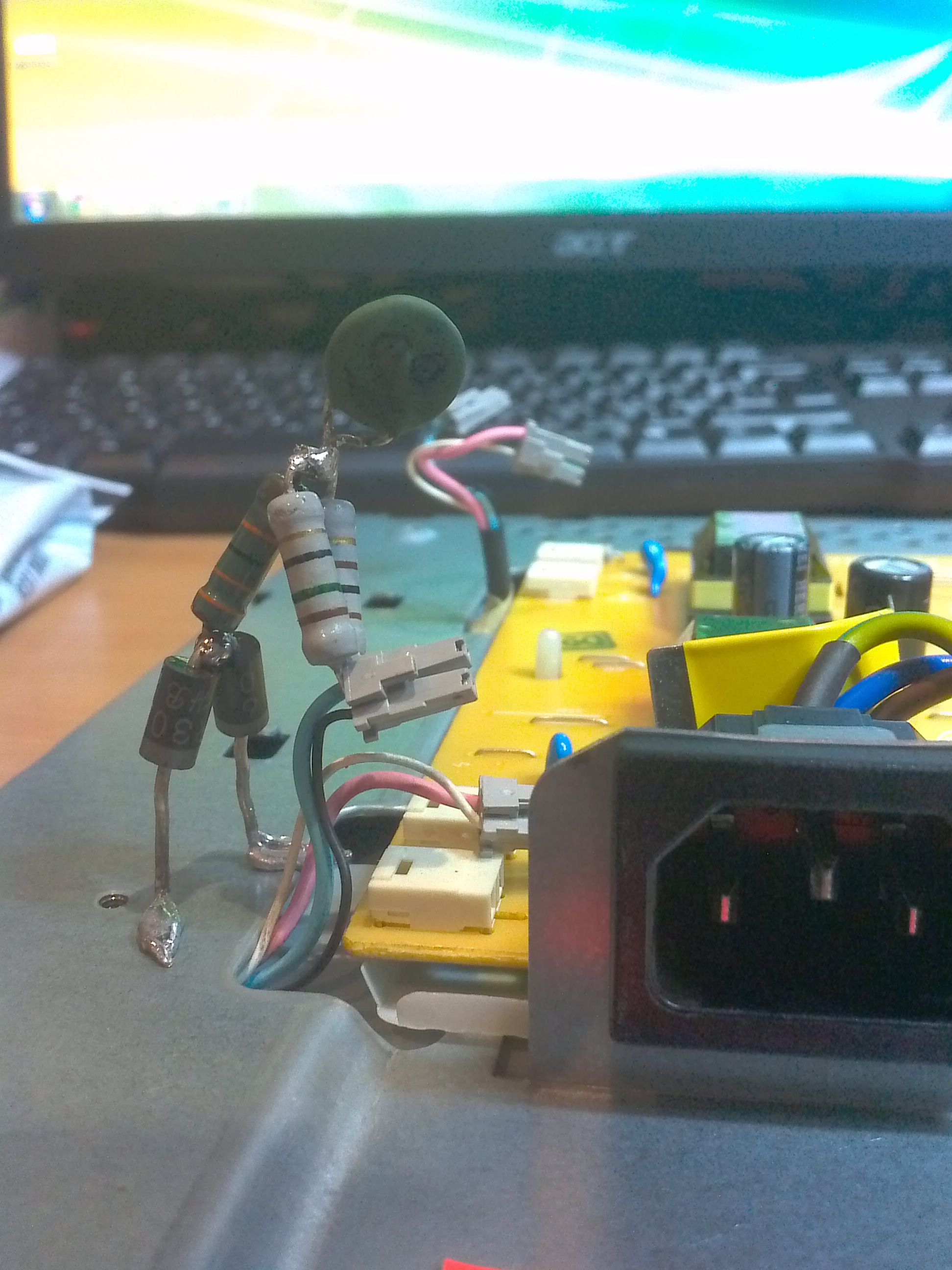
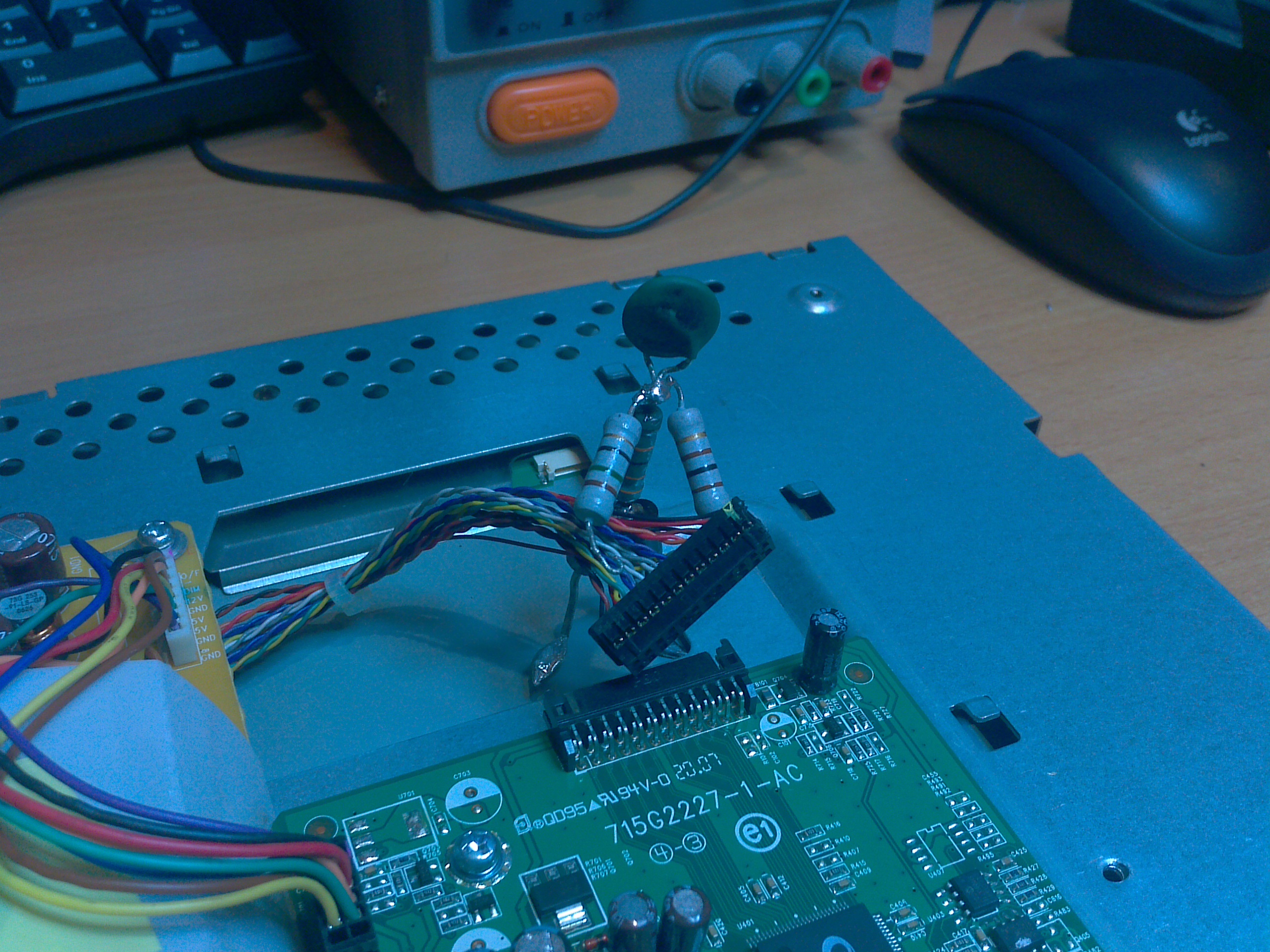
Next, we take a screwdriver in our hands and begin to poke her in all possible screws, located around the perimeter of our, still a whole monitor. Spin them!
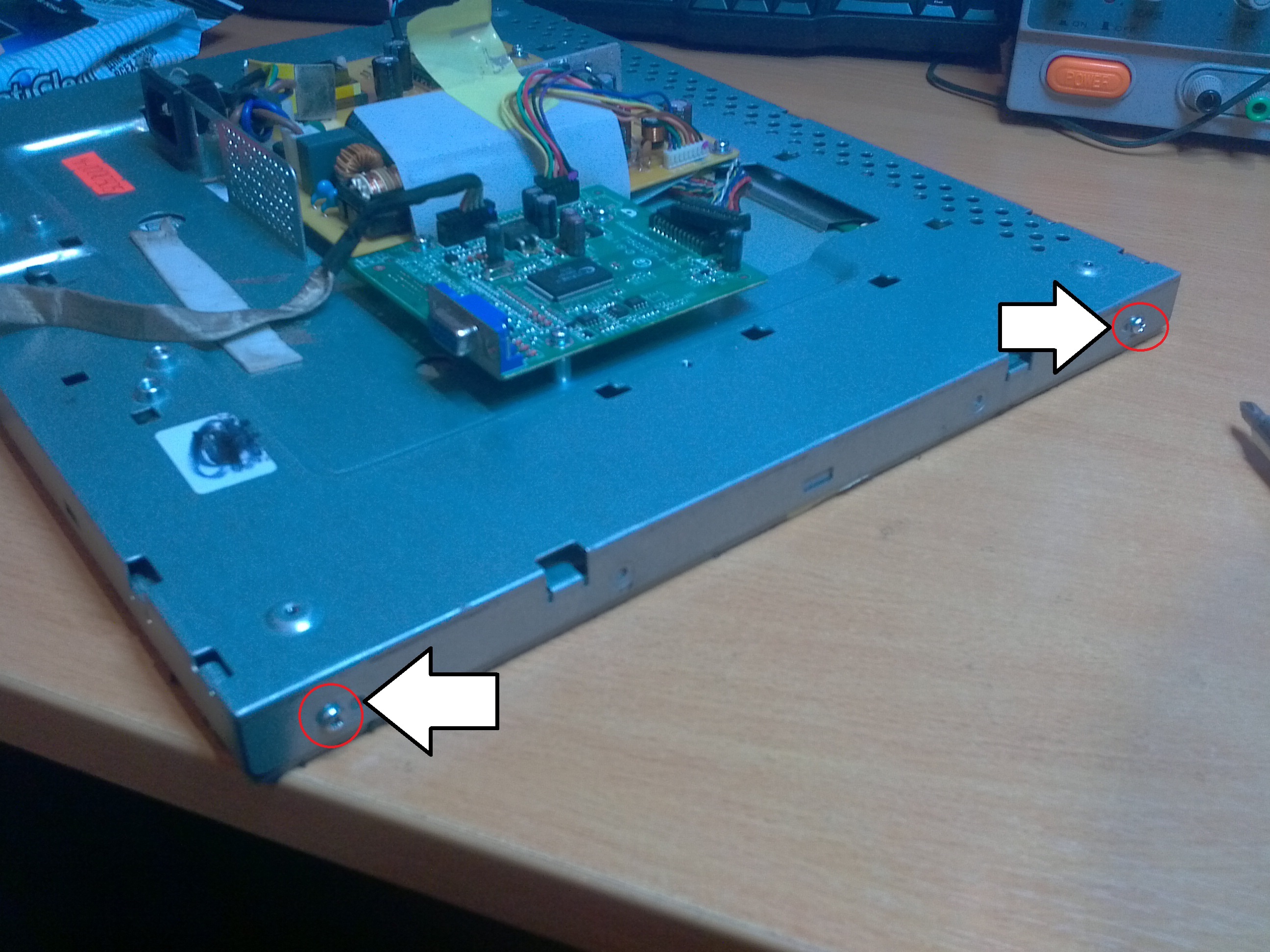
remove the back panel with power supply and controller

Removed? great ... What we see, with the number 1 we have marked the power wires going to the coveted lamps.
2 - a loop going to our matrix.
Asterisks mark the places that need to be hopped up so that you can continue disassembling
The panel on the left we are still cleaning, we do not need it now
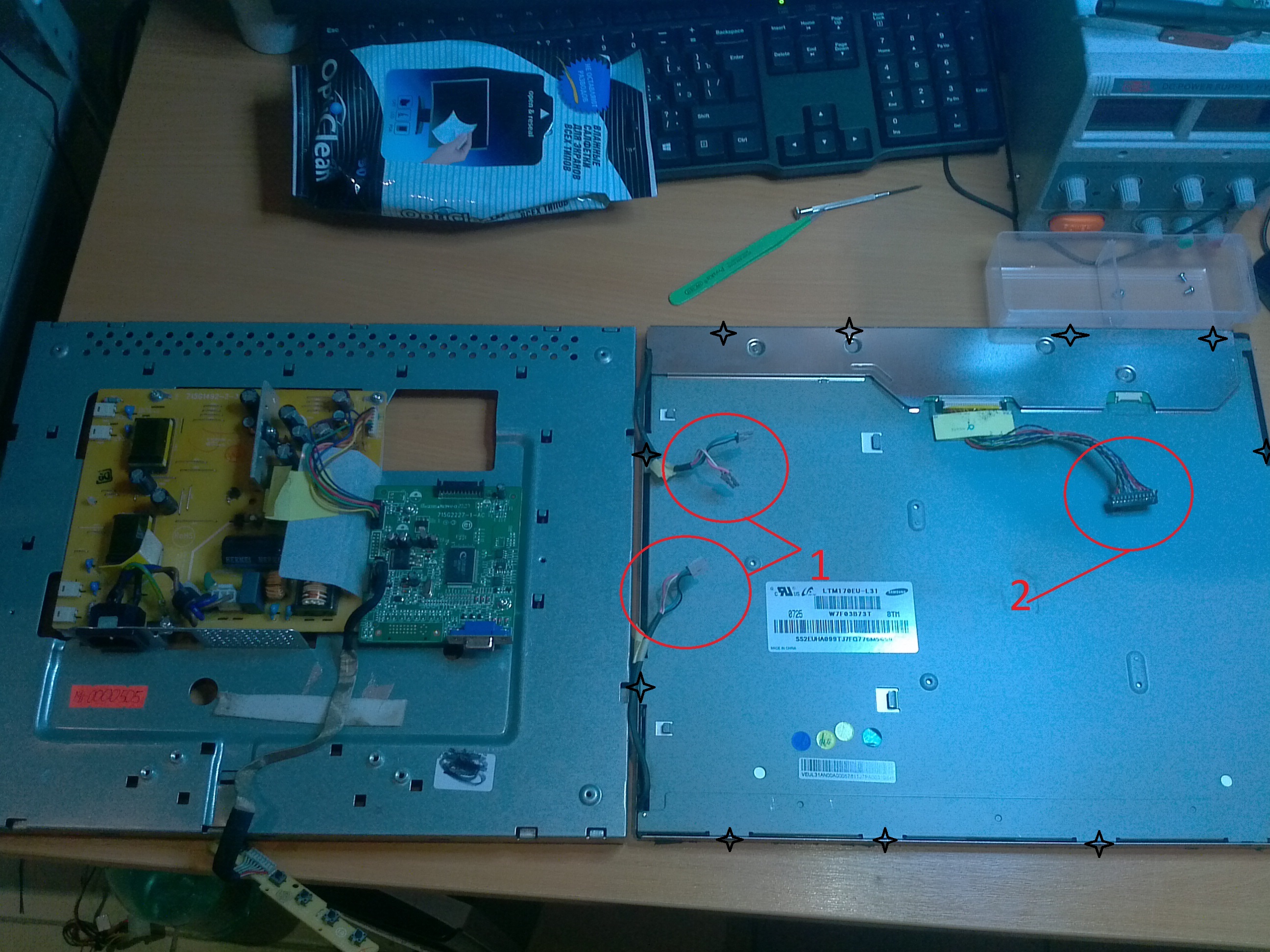
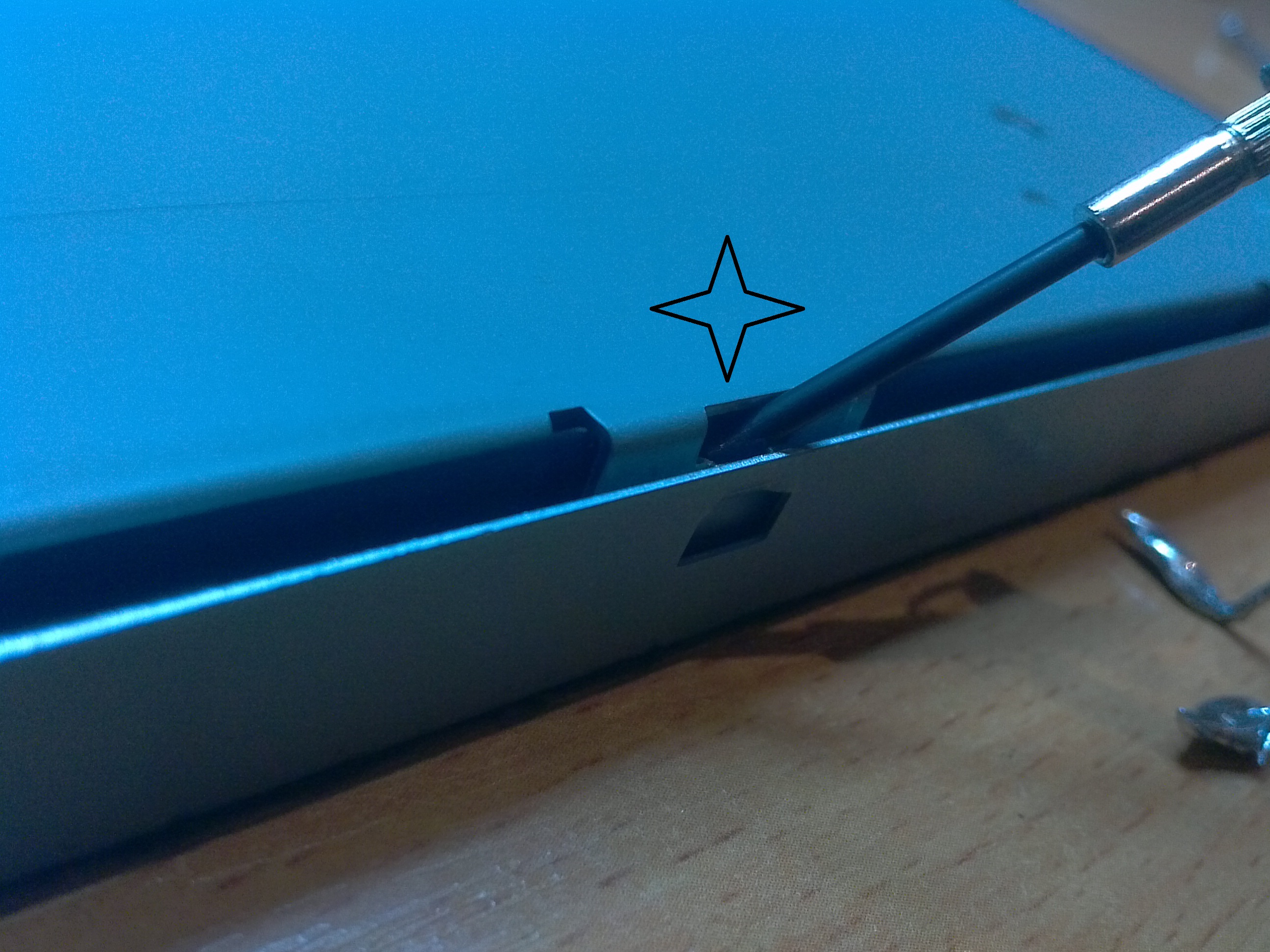
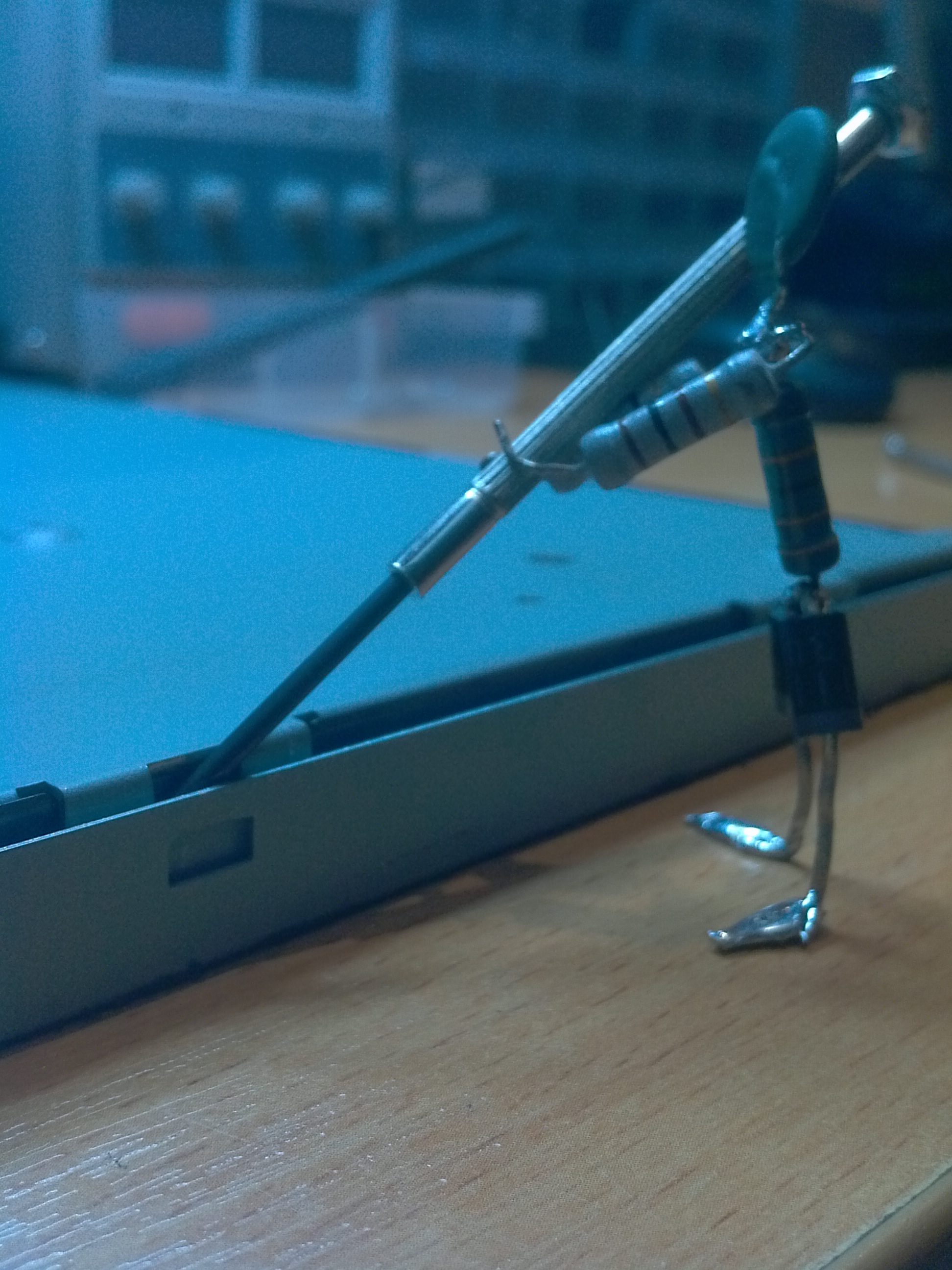
And again we are sorting out our "matryoshka"

Great, almost half way through,
Now we will explain:
5 - our matrix (the same thing with the numbers 640x480 ~ 1920x1080)
6 - signal decoder connected to the matrix with a line of data rows / columns
7 - light guide with light filters
Next, we again delve into the "jungle of the monitor" and remove the plastic frame around the perimeter ...

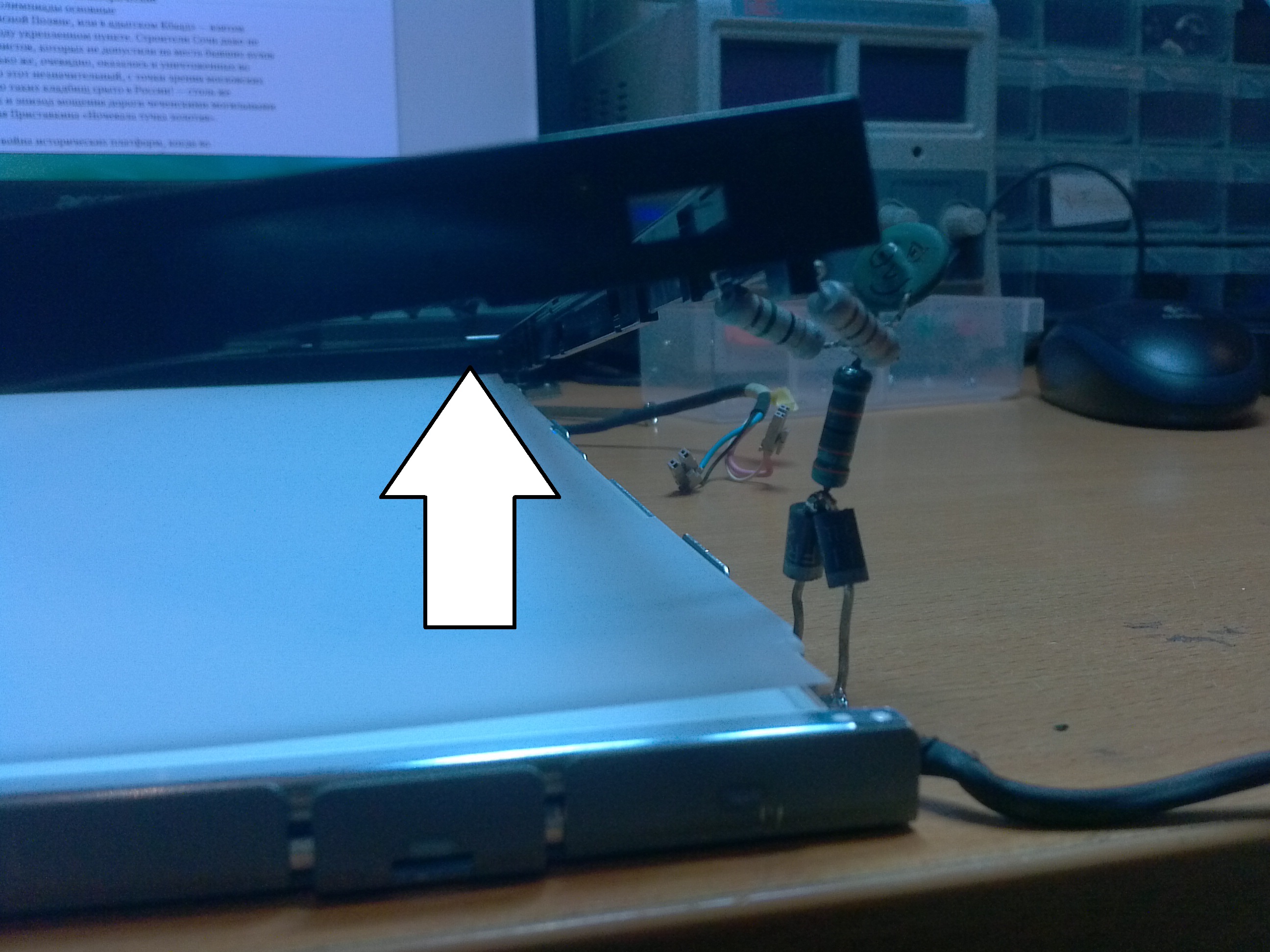
Under the black frame there are 2 thin films lying on top of each other, and under them a light guide.
8 - light filter
9 - polarization film
10 - light guide
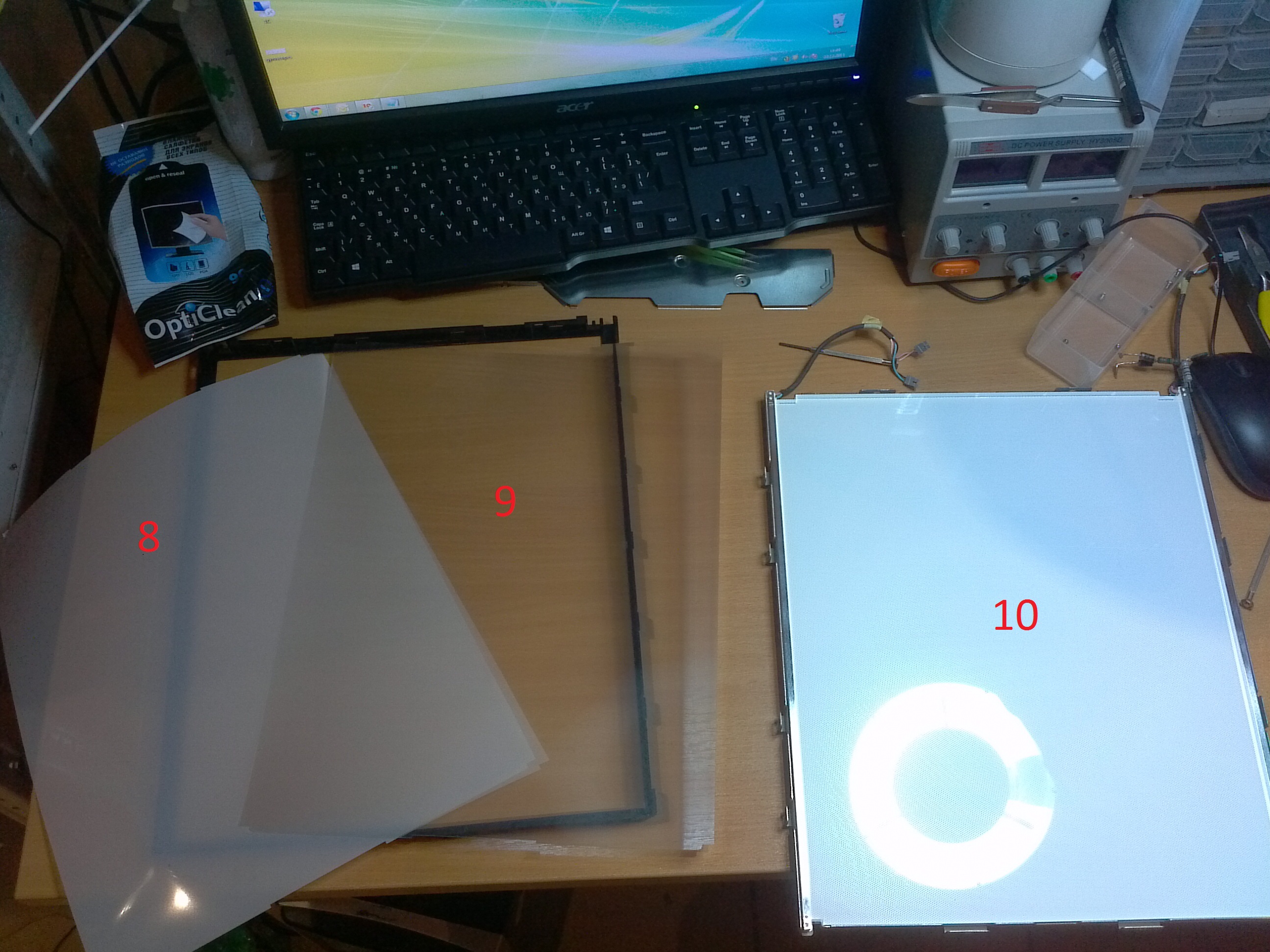
Now we take out the big acrylic piece ( 10 ) and finally we can still see the heroes of the day ...
Those assholes because of which we have come this way ( 11 )

Lord. I present to your attention theflats of malfunctioning backlight lamps!
By the way about the lamps.
Did you know:
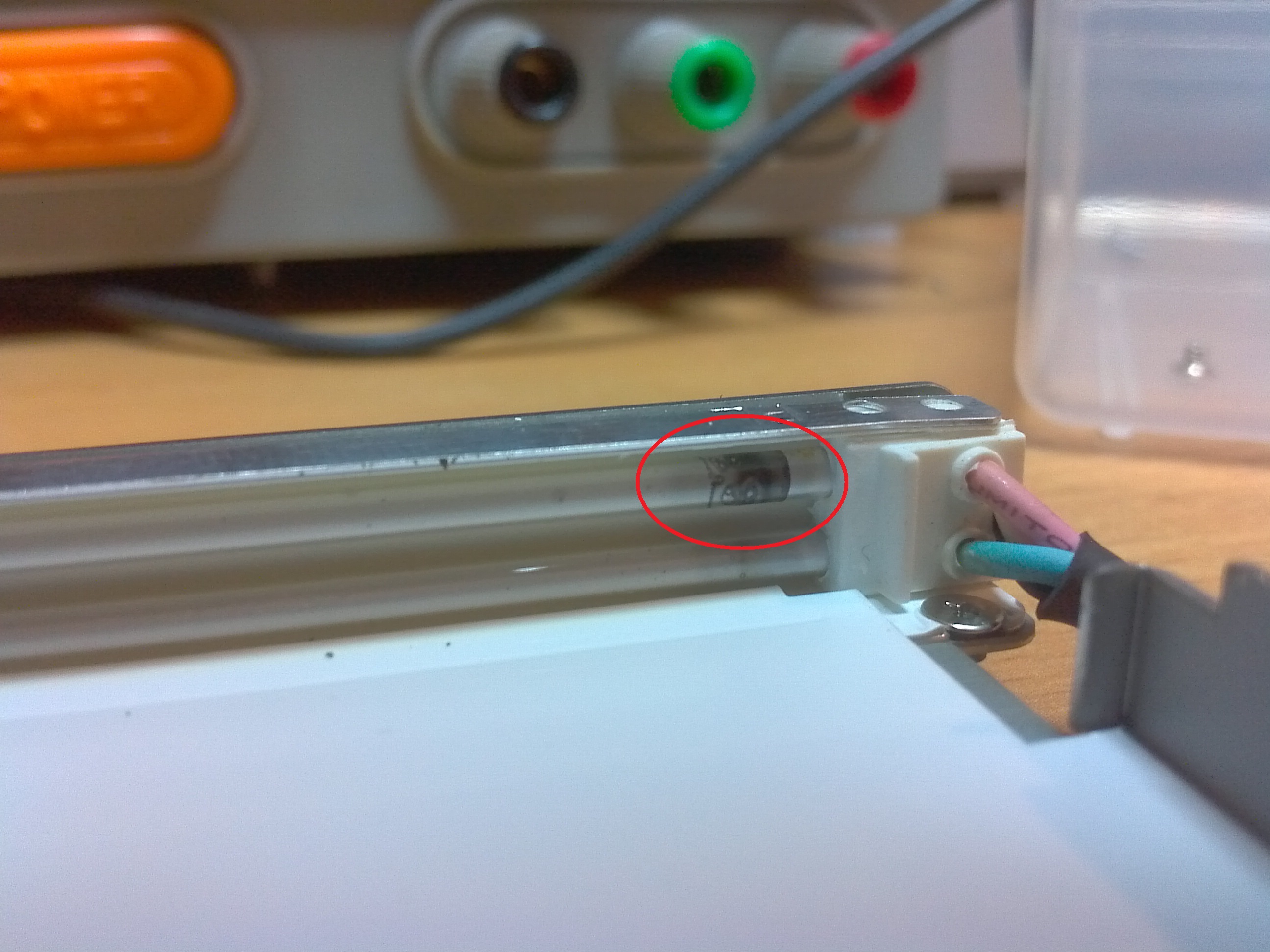
As we see, they really burned out. (this is hinted at by the black marks around the cathodes)
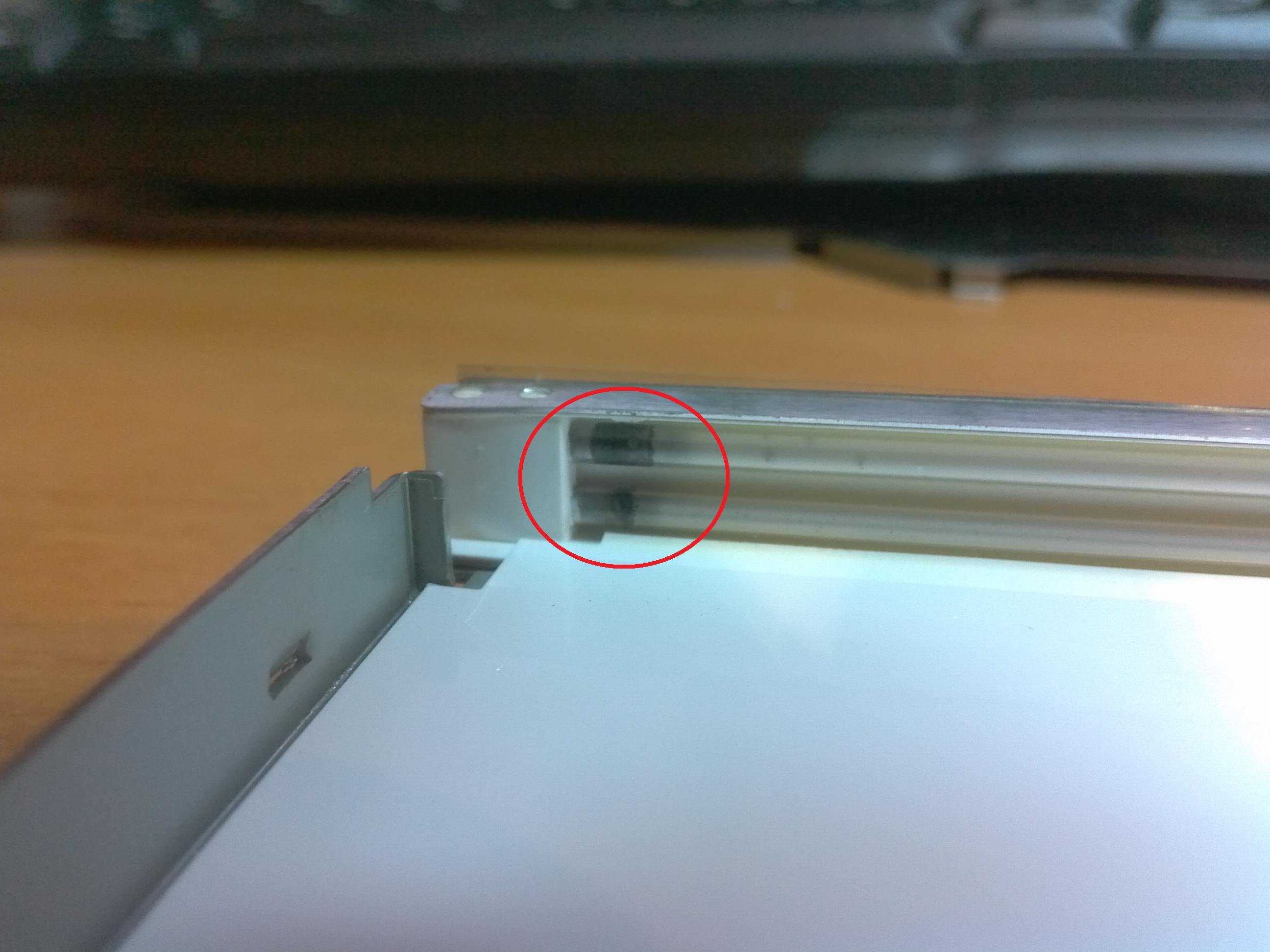
We unscrew them by first pulling out the reflective substrate ( or maybe in your monitor you will not have to do this )
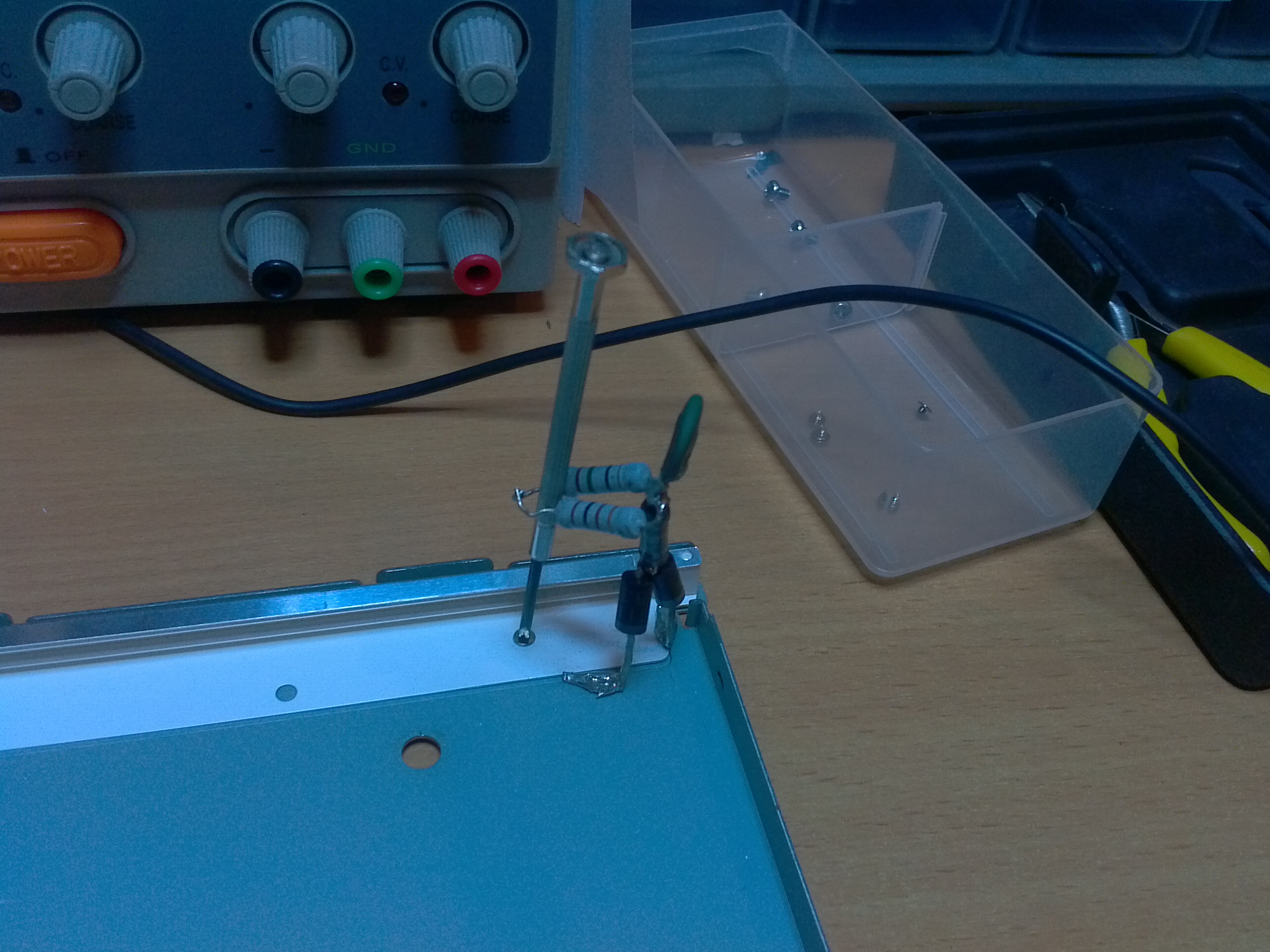
Next, we take obviously working, working lamps ...
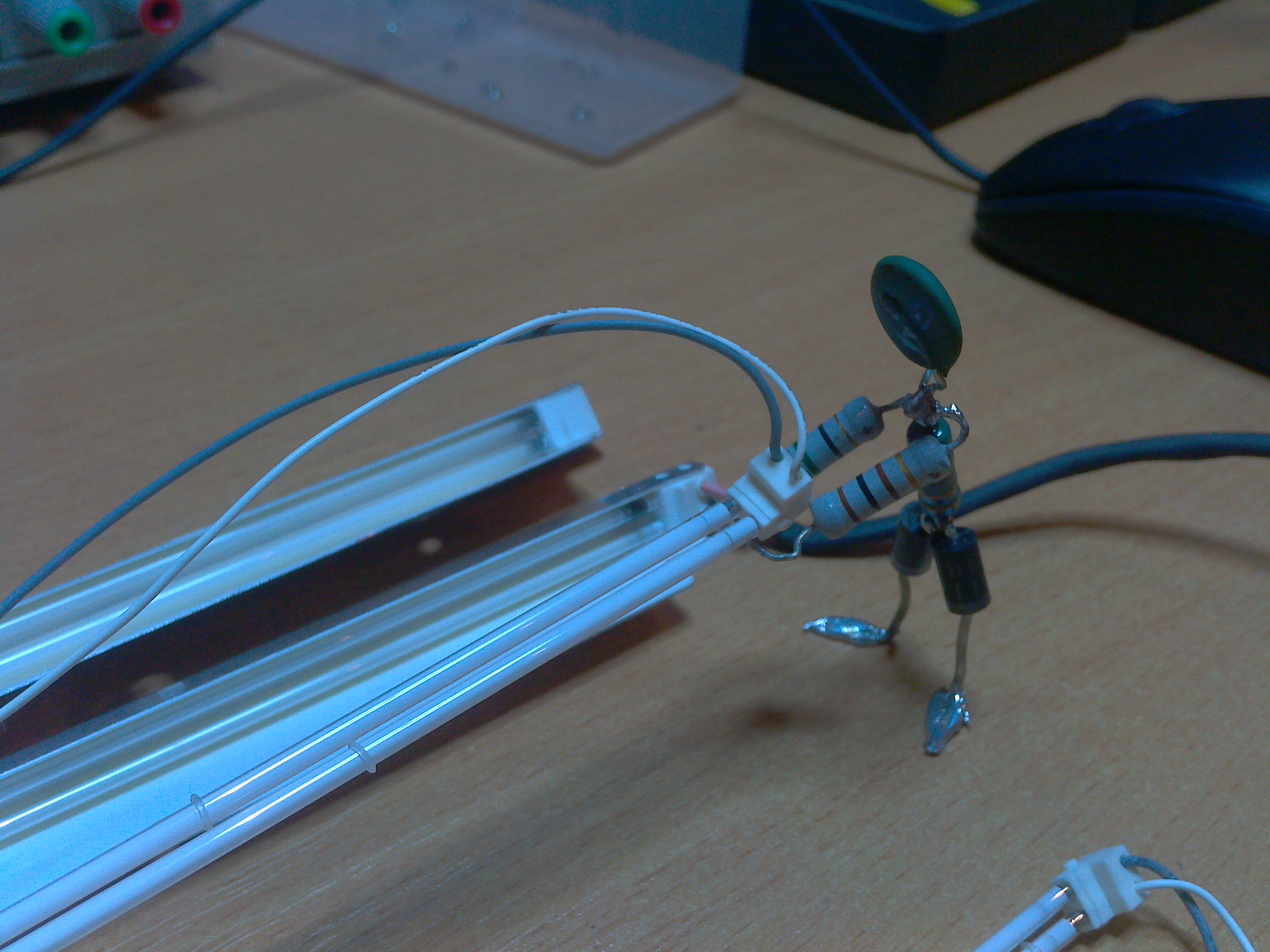
... and we change them in places ( I want to note that it is worth being careful, because they are quite fragile. I also advise you to securely fasten the wires and watch so that there is no breakdown in the future. We isolate everything to the maximum! )
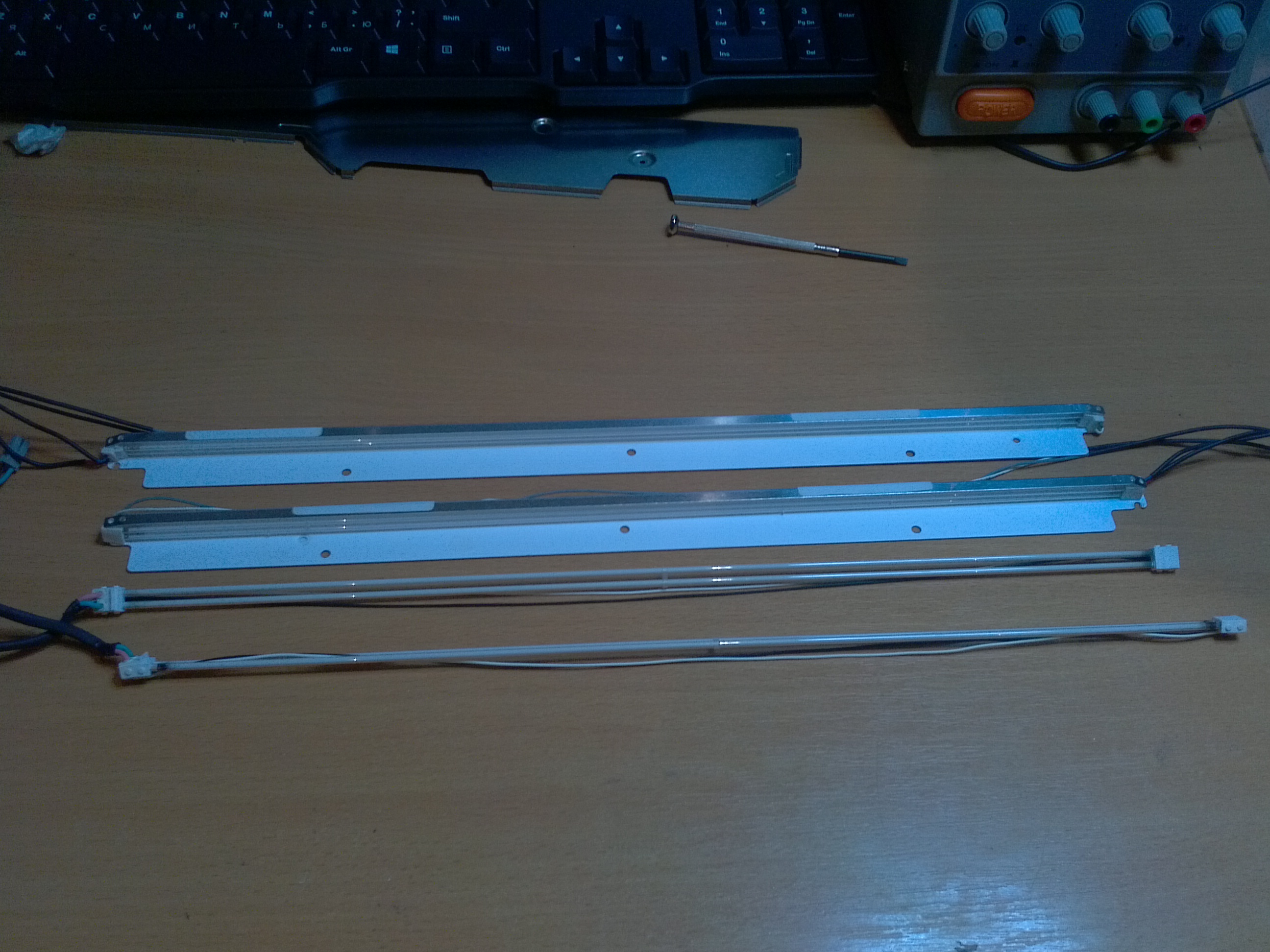
Now we will put our lamps back in place, fasten them, return the reflective thing and put the light guide in place.
Connect - it works! ( Before that, too, it worked, but not correctly, only 1.5 lamps were burning, I did not bother to capture this disassembled action. I repent )
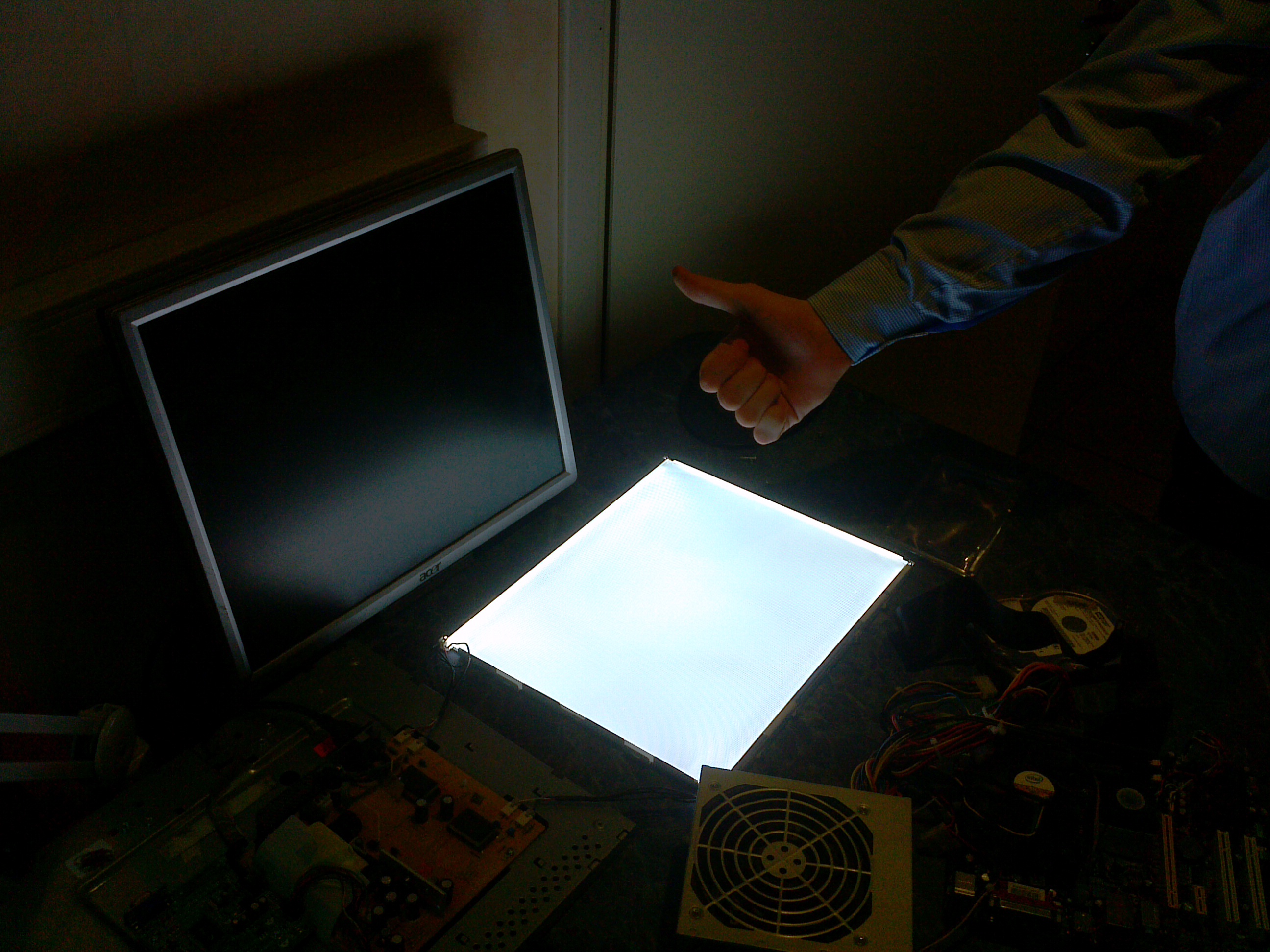
Well, well ... the most difficult thing is over, all is left is to collect everything back.
Getting started.
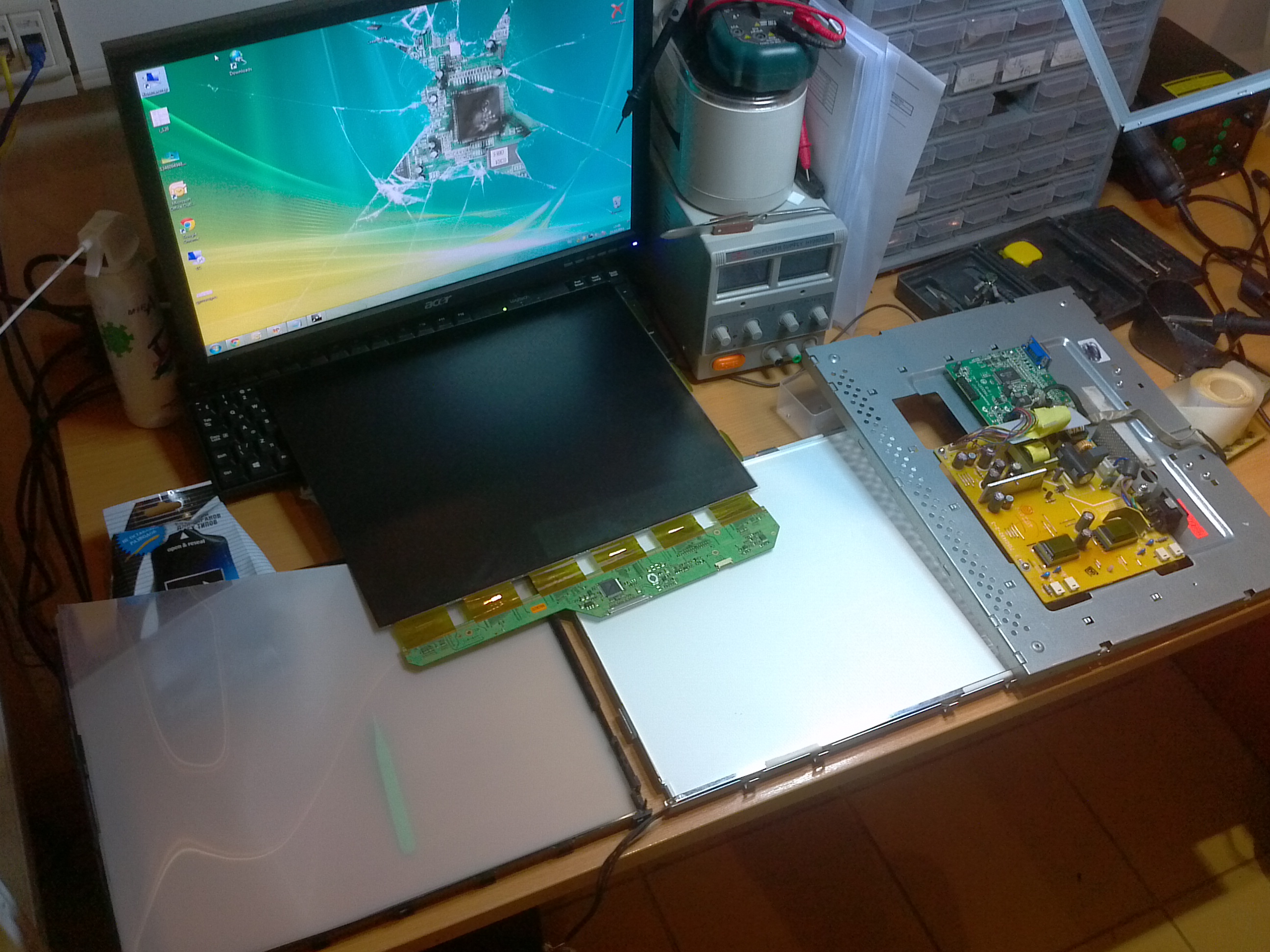
We return the films in place, cover them with a plastic frame and lay our matrix on top, fix it with a metal frame.
(You should not forget about such a thing as dust ... before you collect everything, it is worth blowing all the components of the monitor with air, it will not take long, but it will affect the image quality)
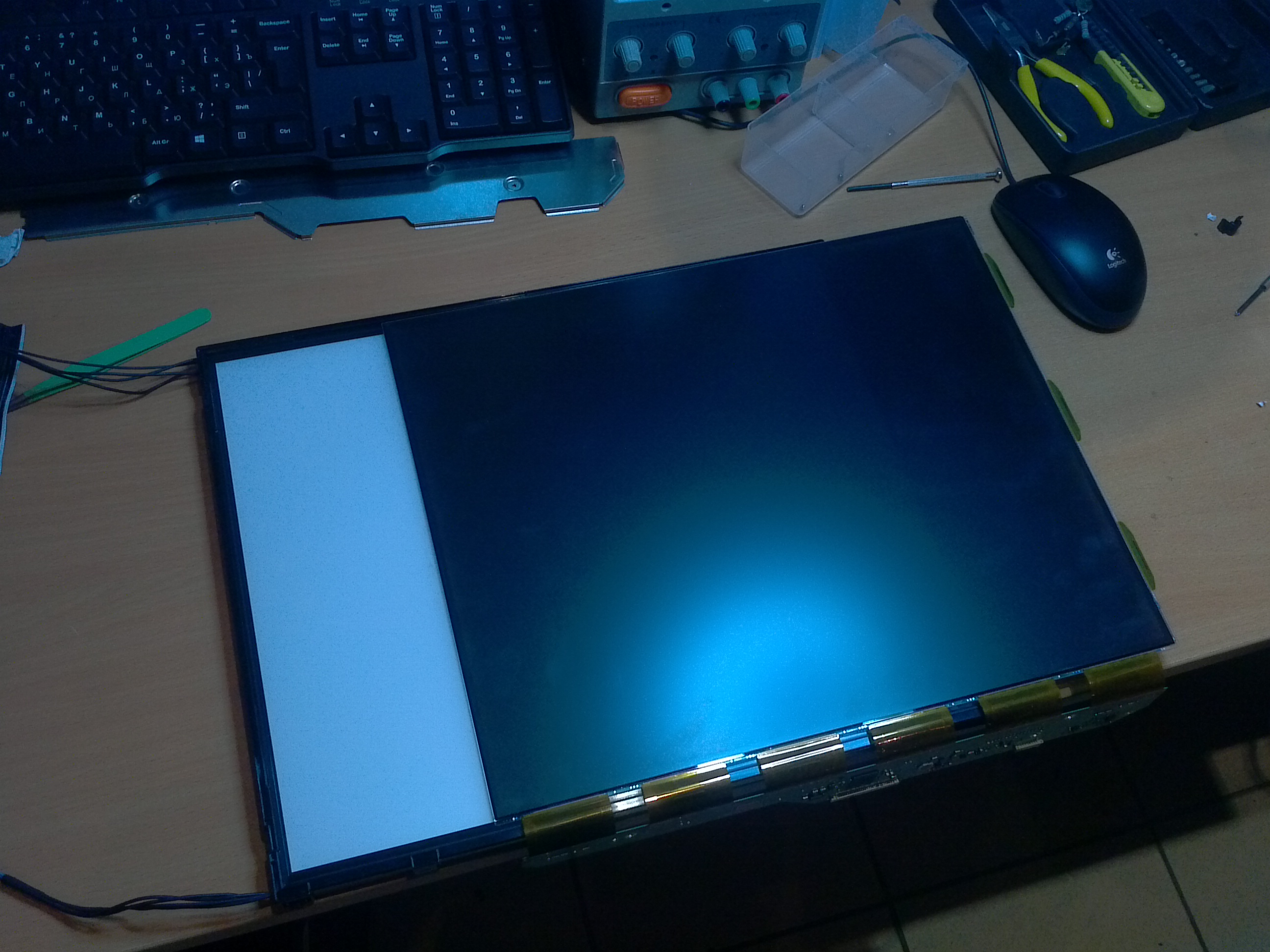
We turn over and return to the place the last "detail"

We connect to the "stand" and enjoy!
Everything works, there are no traces of uneven backlighting,
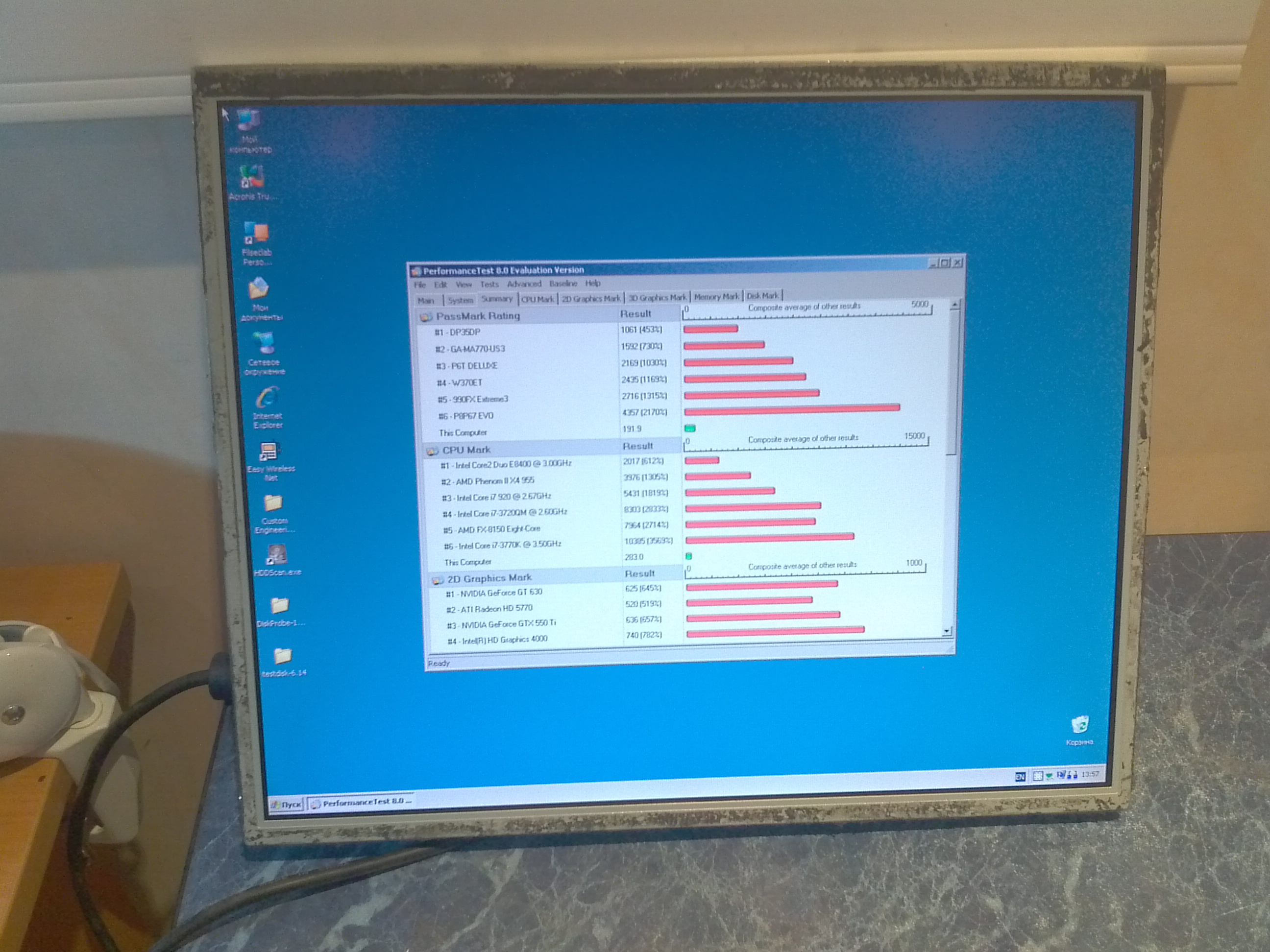
The flight is normal.
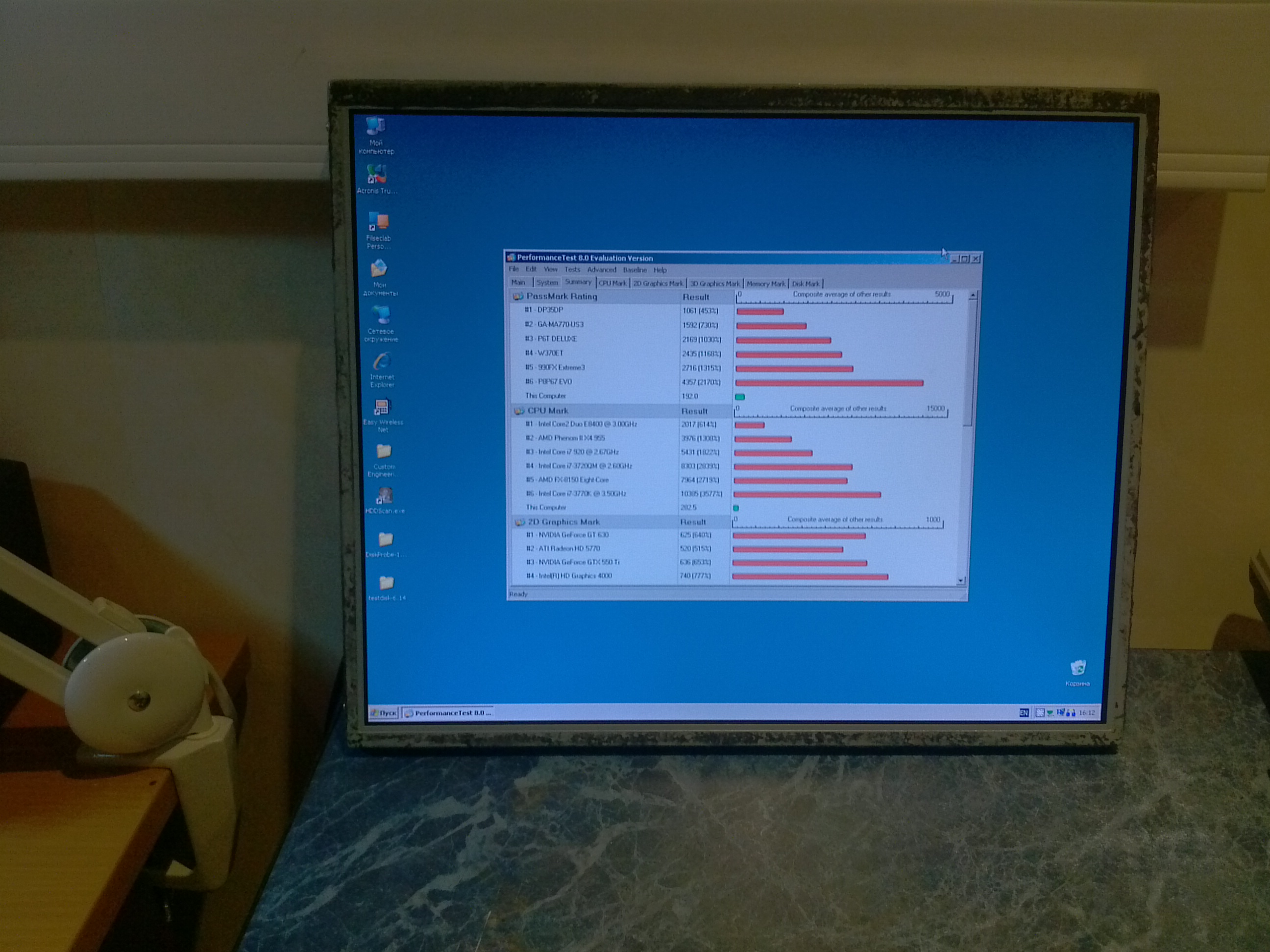
Fin.
_______________________________________________________________________________
What I want to say in conclusion.
0. Replacing the lamp itself is not so difficult, there would be a desire.
You can also experiment, and replace the lamp on the LED strip. But it must be remembered that the LED strip is not quite uniform light gives + to everything it may very well be that you will burn out \ a little more dimly shine 1 or more LEDs, and then the backlight will become uneven. Also do not forget about the color temperature of the LEDs
1. When replacing the lamps, it is necessary to know their dimensions exactly, I was guided by this table.

2 Why did I decide to write this article?
Faced with the repair of the monitor for the first time, I got into the "some search engine" , and did not see detailed instructions ...
Nooo, I don’t say that I didn’t find them, they were, but they seemed to me not complete, so it was decided to collect this material and place it here. Who knows who will come in handy ...
3 Links to related \ used \ additional materials:
cheklab.ru/archives/2534 (a good article about the device of various types of monitors)
radiokot.ru/lab/hardwork/30 (replacement of backlights + some background information)
habrahabr.ru/post/182772 (we enliven the monitor if there are no new lamps at hand)
radioskot.ru/publ/remont/zamena_ljuminiscentnykh_lamp_podsvetki_v_monitore_na_svetodiodnye/4-1-0-594 (successful replacement of lamps for LED strip)
www.yaplakal.com/forum2/topic471720.html (almost successful replacement of lamps for LED strip)
4 ps
If habrazhiteli interesting posts on the repair and restoration of equipment, then I will gladly share the accumulated material.
Comments and suggestions are welcome!
Thanks for attention.
In this post, I would like to consider such a sore LCD monitors as broken backlights, try to figure out why this happens, well, and accordingly change them. Interested please follow the green man.
PS
Under the cut contains 27 photos

')
- Dear, I apologize in advance for the quality of the subsequent photos, photographed on the toaster ....
- Also, I want to note that the monitors do not differ much in principle, so do not be alarmed if you suddenly find al cogs in the place shown in the photo, they are somewhere nearby ...
So, we have a monitor that works in almost romantic, red and pink colors. The operating time of such a monitor is unpredictable ... but as a rule it does not exceed 2-3 hours, after which your eyes are given time to take a break, and the brain to think about the issues of being.

The problem is a failed monitor illumination lamp, but why did it happen?
There are many reasons for this situation:
- manufacturing defect,
- the closure of the metal parts of the lamp on the metal frame of the matrix,
- physical damage, etc.
But let's still a little insight into the theory.
LCD matrixes work on the lumen, that is, the monitor should have a light source that shines through the matrix. The quality of the monitor depends quite significantly on the light source. For stationary LCDs and TVs, direct illumination is usually used when light sources (lamps or LEDs) are distributed over the entire area of the panel. ©
But why does he then continue to work? and such a short time?
It's simple.
It is worth noting that monitors most often use 2 blocks of 2 lamps each ( on the top and bottom of the monitor ), which should evenly distribute light along the fiber under the matrix.
At failure of one or several lamps, the others continue to work. But the inverter ( which feeds them ) is a smart thing, and if he "sees" that something is wrong with one or several of his charges, he decides to stop his work so as not to harm.

Well, let's break to disassembly?
We start by disconnecting all cables from the inverter unit and monitor controller,


Next, we take a screwdriver in our hands and begin to poke her in all possible screws, located around the perimeter of our, still a whole monitor. Spin them!

remove the back panel with power supply and controller

Removed? great ... What we see, with the number 1 we have marked the power wires going to the coveted lamps.
2 - a loop going to our matrix.
Asterisks mark the places that need to be hopped up so that you can continue disassembling
The panel on the left we are still cleaning, we do not need it now



And again we are sorting out our "matryoshka"

Great, almost half way through,
Now we will explain:
5 - our matrix (the same thing with the numbers 640x480 ~ 1920x1080)
6 - signal decoder connected to the matrix with a line of data rows / columns
7 - light guide with light filters
Next, we again delve into the "jungle of the monitor" and remove the plastic frame around the perimeter ...


Under the black frame there are 2 thin films lying on top of each other, and under them a light guide.
8 - light filter
9 - polarization film
10 - light guide

Now we take out the big acrylic piece ( 10 ) and finally we can still see the heroes of the day ...
Those assholes because of which we have come this way ( 11 )

Lord. I present to your attention the
By the way about the lamps.
Did you know:
CCFL lamps are used in LCD panels, which means fluorescent cold cathode lamp in Russian. Its principle is almost the same as hot (in common "fluorescent lamps"). The only difference is that the initial heating of the cathodes is used to obtain the plasma in the hot, and in the cold the plasma is obtained due to the high voltage applied to the cathodes. Then the plasma, which has an ultraviolet radiation spectrum, hits the phosphor, the white coating you see through the flask, and is the last to be converted into visible radiation (white light) ©

As we see, they really burned out. (this is hinted at by the black marks around the cathodes)

We unscrew them by first pulling out the reflective substrate ( or maybe in your monitor you will not have to do this )

Next, we take obviously working, working lamps ...

... and we change them in places ( I want to note that it is worth being careful, because they are quite fragile. I also advise you to securely fasten the wires and watch so that there is no breakdown in the future. We isolate everything to the maximum! )

Now we will put our lamps back in place, fasten them, return the reflective thing and put the light guide in place.
Connect - it works! ( Before that, too, it worked, but not correctly, only 1.5 lamps were burning, I did not bother to capture this disassembled action. I repent )

Well, well ... the most difficult thing is over, all is left is to collect everything back.
Getting started.

We return the films in place, cover them with a plastic frame and lay our matrix on top, fix it with a metal frame.
(You should not forget about such a thing as dust ... before you collect everything, it is worth blowing all the components of the monitor with air, it will not take long, but it will affect the image quality)

We turn over and return to the place the last "detail"

We connect to the "stand" and enjoy!
Everything works, there are no traces of uneven backlighting,

The flight is normal.

Fin.
_______________________________________________________________________________
What I want to say in conclusion.
0. Replacing the lamp itself is not so difficult, there would be a desire.
You can also experiment, and replace the lamp on the LED strip. But it must be remembered that the LED strip is not quite uniform light gives + to everything it may very well be that you will burn out \ a little more dimly shine 1 or more LEDs, and then the backlight will become uneven. Also do not forget about the color temperature of the LEDs
1. When replacing the lamps, it is necessary to know their dimensions exactly, I was guided by this table.

2 Why did I decide to write this article?
Faced with the repair of the monitor for the first time, I got into the "some search engine" , and did not see detailed instructions ...
Nooo, I don’t say that I didn’t find them, they were, but they seemed to me not complete, so it was decided to collect this material and place it here. Who knows who will come in handy ...
3 Links to related \ used \ additional materials:
cheklab.ru/archives/2534 (a good article about the device of various types of monitors)
radiokot.ru/lab/hardwork/30 (replacement of backlights + some background information)
habrahabr.ru/post/182772 (we enliven the monitor if there are no new lamps at hand)
radioskot.ru/publ/remont/zamena_ljuminiscentnykh_lamp_podsvetki_v_monitore_na_svetodiodnye/4-1-0-594 (successful replacement of lamps for LED strip)
www.yaplakal.com/forum2/topic471720.html (almost successful replacement of lamps for LED strip)
4 ps
If habrazhiteli interesting posts on the repair and restoration of equipment, then I will gladly share the accumulated material.
Comments and suggestions are welcome!
Thanks for attention.
Source: https://habr.com/ru/post/207444/
All Articles